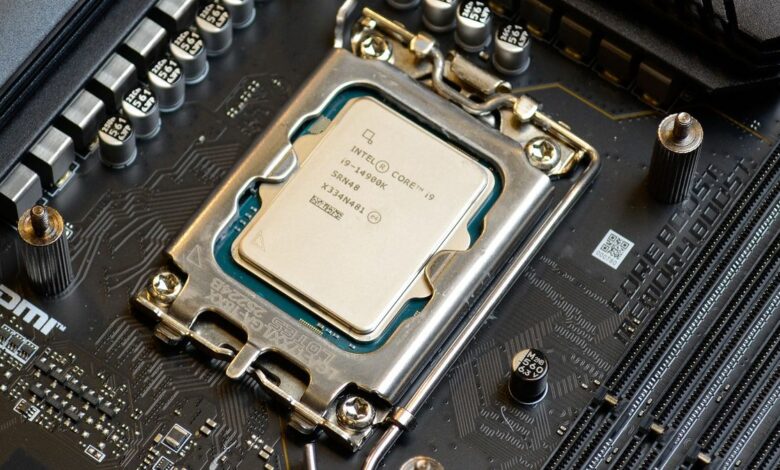Intel admits damage to unstable 14th and 13th generation CPUs is permanent – incoming patch is a preventative, not a cure

Intel released a statement earlier this week regarding the instability issues with 14th and 13th generation CPUs, but more details have since come to light, including a clarification that any damage to high-end CPUs is permanent.
In case you missed it, Intel’s previous announcement identified “elevated operating voltages” as a leading (but not necessarily the only) culprit for crashing and general misfunctioning of these Core i9 processors (and lower-end chips as well).
Team Blue also assured us that a fix in the form of a microcode update for these chips will be available soon, which should arrive sometime in mid-August.
What has now become clear, however, is that this is a preventative measure, as opposed to a cure. By that we mean that it prevents the instability issue with Raptor Lake and Raptor Lake Refresh processors, but it will not reverse any damage that has already been done to a CPU that has already been affected, and it will not make it stable – the misfiring chip will continue to crash.
Or so The edge reports, after firing a bunch of questions at Intel and receiving a fair few responses from Intel spokesperson Thomas Hannaford – some of which may not be of much comfort to you. For starters, the tech site points to Tom’s Hardware’s recent claim that the degradation of an affected Intel CPU is irreversible, with The Verge noting that Hannaford “did not deny that when we asked.”
One of the key questions The Verge asked was: “Does Intel expect the fix to be effective on chips that are already in use but not yet showing any symptoms (i.e. invisible degradation)? Are those CPUs simply living on borrowed time?”
Hannaford responded, “Intel is confident that the microcode patch will be an effective preventative solution for processors already in use, although validation must still ensure that the instability scenarios reported to Intel regarding the Core 13th/14th Gen desktop processors are addressed.
Intel is investigating options to easily identify affected or at-risk processors on end-user systems.
“It is possible that the patch will provide some instability improvements for currently affected processors; however, customers experiencing instability on their 13th or 14th Generation desktop processor-based systems should contact Intel Customer Service for further assistance.”

Analysis: More to worry about…
So what are we to make of that statement? Intel may be ‘confident’ that the patch will work preventatively, but for us the issue of ‘invisible degradation’ is whether there is potential damage done – something that isn’t detectable yet – which could be a problem down the road. In other words, while the microcode update may prevent further damage to the chip, we’re concerned that if there is damage done already – but nothing that has any actual observable effect – it could mean that the CPU won’t last as long in the long run as it otherwise would.
We find this whole episode a bit troubling in this regard, and to add to these concerns, The Verge did not provide an answer when asked whether Intel might extend warranty coverage for 13th or 14th generation processors. The spokesperson simply declined to comment.
It’s also worth noting that the last paragraph of the above statement doesn’t completely rule out the possibility that the microcode update power just help Intel processors that are already suffering from instability issues – and that it’s ‘possible’ that the patch could provide ‘some instability improvements’, which would at least be something.
But if you have a processor that is already showing problems, it seems safest to try returning it and replacing it.
Other notable revelations from The Verge’s Q&A session with Intel include Team Blue’s admission that any 13th- or 14th-generation CPU with a power consumption (TDP) of 65W or higher may be affected by the issue, potentially resulting in damaging elevated voltages.
That includes not just Core i9 and i7 chips, but also Core i5 models, such as the Intel Core i5-14600 – and we’ve seen reports of Core i5 CPUs being affected . That said, it seems like the more expensive the chip and the higher the TDP, the greater the risk of a bad outcome with the stability blues.
Intel has also said that there will be no recalls due to this issue. The company has not halted shipments or sales of chips while the microcode update is being finalized and validated.
As mentioned, that microcode patch will be rolled out via motherboard vendors (in BIOS updates) next month. Meanwhile, Hannaford confirmed to The Verge that Intel is still investigating possible other causes that could occur besides the discovered “major” voltage issue.
Intel’s problem here is that it can’t let this continue – not with the Arrow Lake vs. Ryzen 9000 battle looming. Because this episode could be a pretty scary one for those looking to buy a next-gen chip, potentially pushing them towards Ryzen when they might not have done so before all of this happened.



